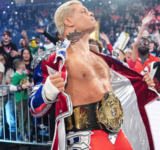Streaming music on apps like Spotify, YouTube Music, and Apple Music is the most convenient way to listen to your favorite artists now. You can access your preferred music legally, and by paying a subscription fee, you are allowing the artists to earn revenue. In contrast, this sounds like a good deal for the listeners and the streaming companies; however, most artists claim otherwise. So, who gets the most out of this streaming model?
The state of the streaming services
Spotify earned more than 11 billion euros in revenue in 2022, up from 7.88 billion the previous year, according to Statista. Premium subscribers contribute a majority of Spotify’s revenue than ad placement, and for good reason, as anyone who has used the free version knows how cumbersome it can be. Nevertheless, Spotify is the market leader in music streaming, with over 500 million users and 200 million subscribers worldwide. Other dominant players gaining market share include Apple Music, Amazon Music, and YouTube Music.
Streaming services work by paying royalties to the rights holders of the songs, which could be distributors or record labels. From there, the labels pay a percentage to the artists, depending on the contracts.
And this is where it gets interesting, as the amount an artist receives per streaming is relatively low, ranging from 0.003 to 0.005 dollars on average. To put it into a clear perspective, an artist would need 150 streams to earn a dollar.

What do the artists say?
Seeing how most artists would need astronomically high figures for streaming to earn money, many artists, including independent ones, have been very vocal against the current streaming model. Their argument that it is unsustainable and exploitative certainly holds ground when one sees just how little the artists themselves earn with streaming.
Using algorithms and playlists to promote only popular artists is also a bone of contention for many artists, as it creates a ruthless scenario where the top 1% of artists end up with 80% of all the streams. At the same time, streaming services also need to offer more customization and flexibility to the artists so that they can set their own prices or release schedules.
Many artists have taken action against the exploitative nature of streaming models. The prime example is Taylor Swift, who famously removed her music from Spotify in 2014, accusing the streaming giant of devaluing her art. She later returned to Spotify in 2017 after securing a better deal.
There’s also the ‘Justice at Spotify’ campaign, launched by a union of musicians demanding the streaming company to stop underpaying and misleading artists, with one of their demands being Spotify paying artists a minimum of 1% per stream.
What is the response of the streaming giants?
For their part, streaming services have defended their model, arguing that they provide both the artists and listeners the platform and opportunity to connect through music. And this is something that can’t be denied, as the streaming service is the most accessible platform for artists to reach and connect with their fans, with no barriers to location.
Music streaming has also been crucial for music enthusiasts to discover new artists, helping artists generate additional income from merchandise and licensing deals, among other benefits.
This hassle-free music service makes fans more appreciative of the artists, as supporting their favorite or an up-and-coming musician legally goes a long way in securing their musical integrity.

But still, the issue of underpaying must be addressed. These services must pay a big part of their revenues to the major record labels while competing with other services that all want to be at the top. With abundant digital streaming options available to consumers, like video games and entertainment, it can be tricky to sustain listeners.
But that’s not to say the streaming services have not noticed the issues with artists, and steps are underway to make the streaming ecosystem fair and sustainable. Spotify’s initiative, like Spotify for Artists, allows them to access data, insights, and promotional tools to help them with their music. Spotify Fan Insights helps artists engage with the fans, while Spotify Direct Deals allows artists to license their music to Spotify, receiving higher royalties directly.
Music streaming has given fans the accessibility and convenience expected under the current digital ecosystem. Piracy and illegal downloads were rampant in the music industry, and streaming changed that completely. While there’s still a long way to go for artists to be paid fairly for their music, there’s no doubt that music streaming is here to stay. The sooner the streaming companies understand this and value the artists fairly, the better it will be for everyone in the long run.






















